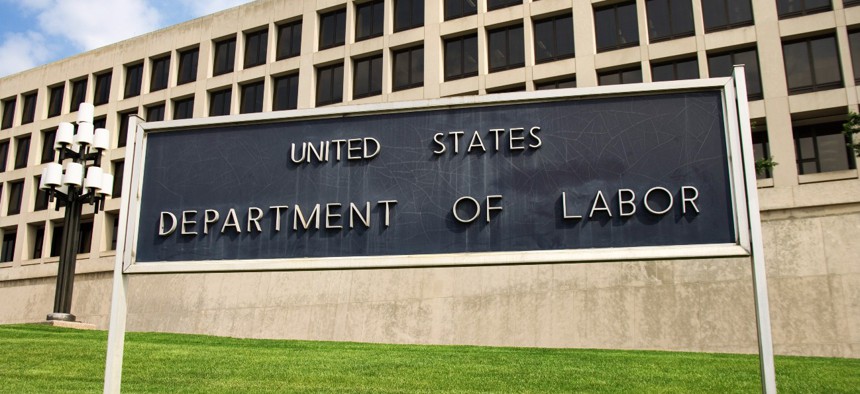
The Labor Department will officially publish the proposal to reduce service contractor turnover on Friday. Thinkstock / Getty Images
The Labor Dept. Moves Forward on Reducing Turnover on Service Contracts
A forthcoming proposed rule will carry out an executive order the president signed last fall.
The Labor Department is making progress on the president’s directive from last fall to reduce turnover on federal service contractors in order to promote economy and efficiency.
The Labor Department will officially publish a notice of proposed rulemaking in the Federal Register on Friday to implement the executive order the president signed in November that requires contractors and subcontractors who work on covered federal service contracts to give service employees the right of first refusal on successor contracts. This brings back policies from an Obama administration-era directive, which the Trump administration revoked.
“The department anticipates the proposed rule would, if finalized, provide economic benefits and enhanced efficiency in covered contracts by promoting the retention of experienced workers, thereby reducing the disruption in the delivery of services during the transfer of covered federal service contracts, maintaining physical and information security, and providing the federal government with an experienced and well-trained workforce familiar with government personnel, facilities and requirements,” said a press release from the Labor Department on Thursday.
The proposed rule would establish standards and protocols for implementing and enforcing the executive order; outline the obligations of contracting agencies and contractors; create an investigation process to protect workers from displacement; and list sanctions and remedies that the department could impose on contractors for noncompliance. Public comments are due by August 15.
The department estimated that 119,700 firms currently hold Service Contract Act agreements and could possibly benefit from this rule. After casting a wider net––to include those who plan to bid on Service Contract Act work in the future––the department calculated there could be 49,200 potentially affected firms.
The department determined that the number of small businesses that could be affected ranges from 74,097 to 329,470.
As for the total number of affected workers, there was “no readily available data” for this, but the department used the methodology used in the final rule on increasing the minimum wage for employees of federal contractors to $15. “Using this methodology, the department estimated the number of workers who work on [service act] contracts, representing the number of ‘potentially affected workers,’ is 1.4 million potentially affected workers,” said the proposed rule. This is likely an overestimate because some workers are not covered by this rule, the department noted.
Because there wasn’t any “readily available data” for affected workers, the department was not able to give estimates on workers affected by demographics, but welcomes any data sources on such, so it can better assess the equity impact.
“While much has stayed the same, there are also several aspects of the new nondisplacement [executive order] that are different and potentially portend more serious enforcement consequences for federal contractors and subcontractors” than the Obama executive cover, Michael Schrier, partner at the law firm Husch Blackwell LLP who specializes in government contacting, wrote in November. The changes “suggest that the Biden administration intends a more expansive and muscular enforcement regime further tilting the balance of power towards service employees and making it more difficult for contractors to defend themselves.”
According to Stan Soloway, president and CEO of Celero Strategies LLC, who formerly served as president and CEO of the contractor group the Professional Services Council, the efficacy of the final rule will hinge on whether it gives companies reasonable discretion to make hiring decisions, including the definitions of such things as the "same or similar work" for successor contracts.
Another important aspect is that the executive order does not have a requirement that the new contract be performed at the same location as the previous one (unlike the Obama era executive order), which appropriately recognizes the expansion of telework and remote work, said Soloway.
Robert Martinez Jr., international president of the International Association of Machinists and Aerospace Workers, which is the largest defense and aerospace labor union in North America, said the executive order and subsequent rulemaking process “is a win for workers and employers who work under the Service Contract Act.”
Thousands of their members “and other service contract workers can breathe a sigh of relief, knowing their jobs won’t be displaced when government service contracts change hands from one employer to another,” he continued. “Our nation can take great pride in the efficient government procurement and fairness to these workers and their families under this Biden executive order.”







